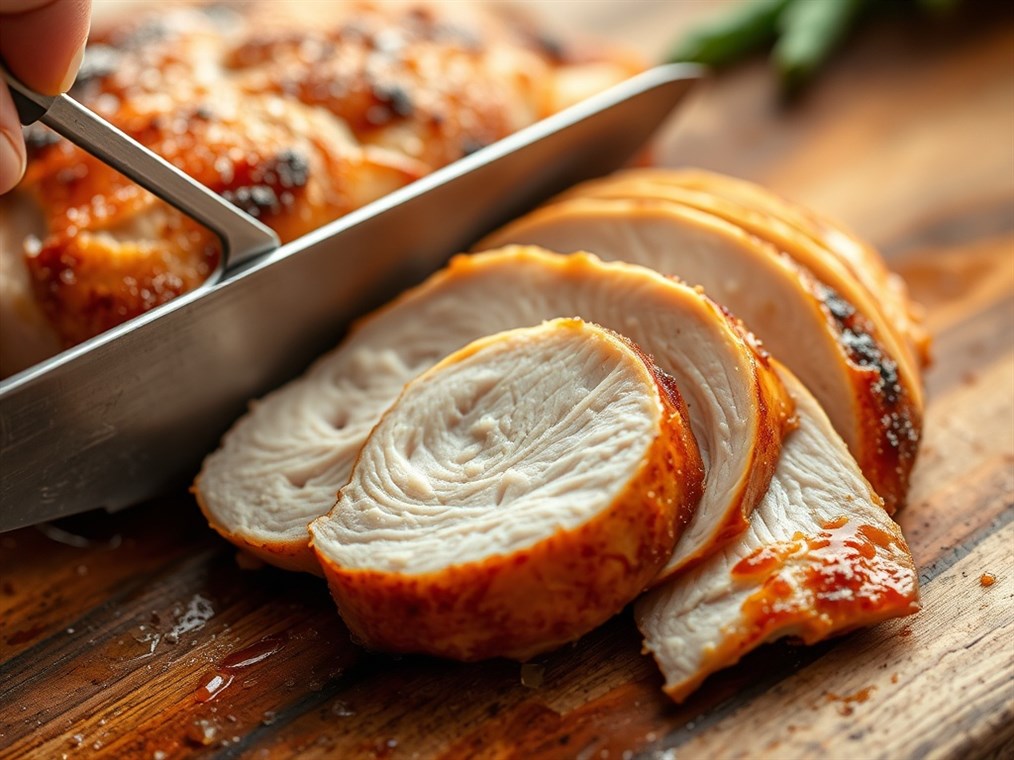Chicken Slicing Secrets: Are You Doing It Wrong?
Okay, let’s talk chicken. We all cook it, right? But have you ever stopped to think about how you’re slicing it? I’m not talking about dicing versus shredding; I’m talking about the grain. Yeah, that thing you probably only think about when you’re grilling a steak. Turns out, it matters for chicken too, and it can be the difference between a tender, juicy bite and something that feels like chewing on rubber.
So, what is this “grain” we’re talking about? Simply put, it’s the direction those muscle fibers are running. Think of it like the grain in a piece of wood. You can see the lines, right? Those are the fibers, and they’re what give meat its texture.
Here’s the thing: cutting against the grain is where the magic happens. Why? Because you’re essentially shortening those muscle fibers. It’s like this: imagine trying to chew through a super long piece of string. Annoying, right? Now, imagine that string cut into tiny pieces. Much easier! That’s what you’re doing when you slice against the grain. You’re making it easier for your teeth to do their job.
Seriously, it can make a huge difference. We’re talking potentially four times less chewy! Plus, and this is a bonus, it opens up the meat, giving your marinades and seasonings a chance to really get in there and do their thing. More flavor? Yes, please!
Now, finding the grain in chicken breast can be a bit of a challenge. It’s not always as obvious as it is with, say, a flank steak. Sometimes those fibers are sneaky, and they curve around. Don’t worry, though; I’ve got some tricks for you:
First, take a good, hard look at the chicken. See those faint lines? That’s your grain. Also, keep an eye out for tendons. The grain often seems to fan out from those spots, so they can be a helpful guide. Still not sure? Here’s a cheater method: take a small piece of cooked chicken and try to shred it. The way it naturally pulls apart will tell you which way the grain is running.
Alright, you’ve found the grain. Now what? Grab a sharp knife – a good chef’s knife or even a boning knife will do the trick – and slice perpendicular to those fibers. Aim for a nice, clean 90-degree angle. You want slices that are about the same thickness, too, so they cook evenly. Some chefs even like to cut on a slight angle, a “bias cut,” which can give you a nice balance of tenderness and a little bit of chew. It’s all about personal preference, really.
Now, is this always crucial? Well, not necessarily. If you’re slicing your chicken super thin for a stir-fry, it’s probably not going to make a huge difference. And if you’re using something like chicken tenderloins, which are already pretty tender, you might not notice a massive change. Dicing? Forget about it. Grain doesn’t really matter when you’re chopping it up into little pieces.
But, honestly, taking that extra minute to find the grain and slice against it is almost always worth it. It’s a simple little trick that can really elevate your chicken game. So, next time you’re cooking up some chicken, give it a try. I think you’ll be surprised at the difference it makes! Your dinner guests (and your jaw) will thank you.

